Seyne-les-Alpes
Situated in the French Alps, the town of Seyne was
fortified with a tower around 1220, but successful raids from Savoy in the
1690s encouraged Louis XIV to send Vauban to the Alps to strengthen
Seyne and other Alpine defenses. Niquet, the local engineer,
perhaps thinking that the mountain range between Seyne and the
Savoyard Ubaye Valley to the north prevented passage of a strong enemy
force, had designed a relatively simple wall to surround the town -
with no ditch and no ramparts and unsuitable bastions in Vauban's
mind - bastions like those found at nearby Colmars.
This construction began in 1690. In 1692 Vauban
ordered a citadel built that incorporated the medieval
tower. Construction began in 1693, and it was completed in 1699,
but when Vauban returned in 1700 he was very unhappy with the result,
describing the defenses as, "One of the worst places that I have seen
in my life."
The citadel was too narrow and it faced higher ground without a
bastioned front toward this high ground so that an enemy could fire
along the length of the place. The construction was poorly done
and on shale Vauban proposed changes to the defenses, but with
the Ubaye Valley going to France after the War of Spanish
Succession, the fort lost much of its importance, and the changes were
not made. In 1722, there were eleven cannon in the citadel, and
in the 1750s part of the tower collapsed. The fort was in ruins
in the 1780s.
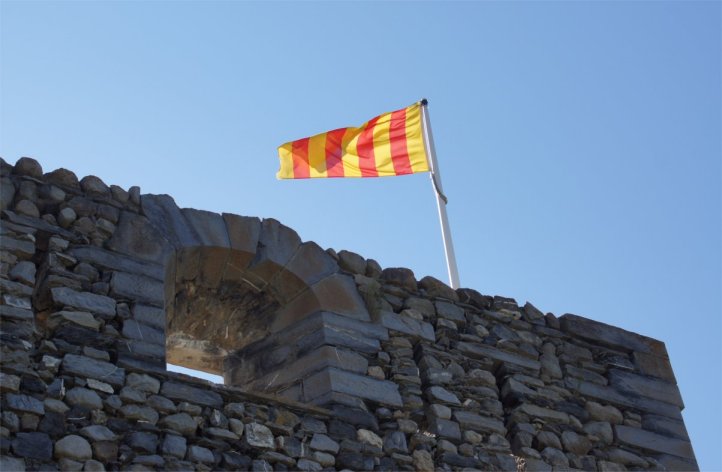
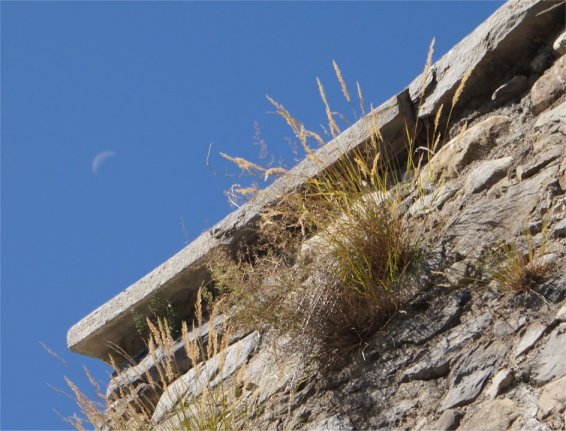
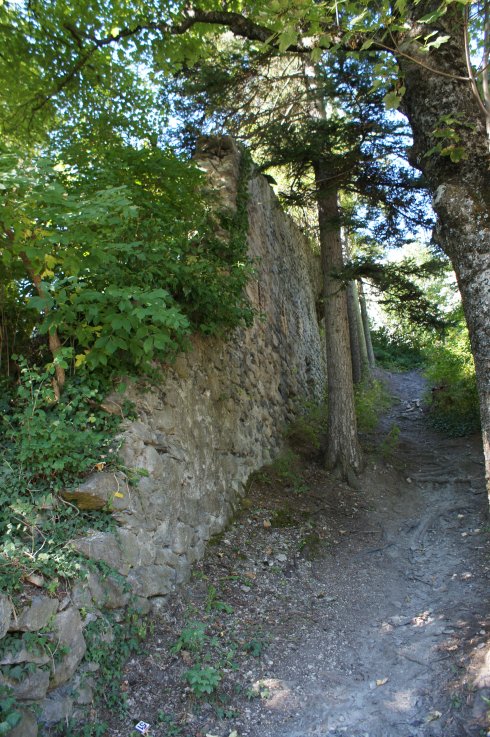
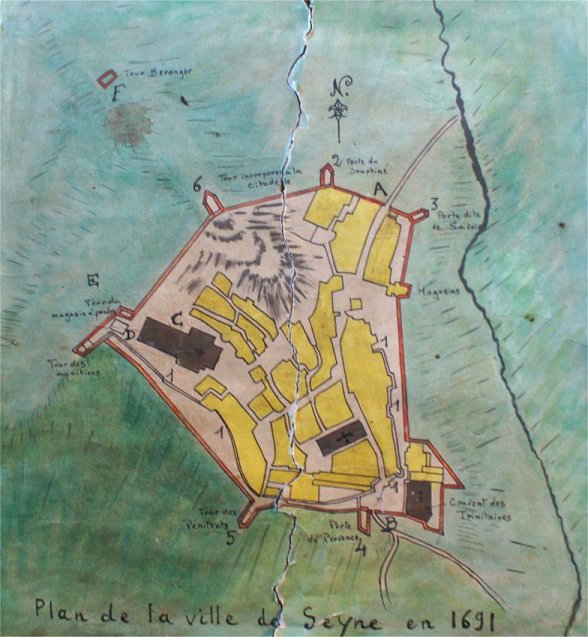
There are remains of the town walls descending the ridge from the
citadel. Note that there is no ditch. The map at right
shows the city walls before the citadel was constructed, which was near
"6" and "F", the tower.
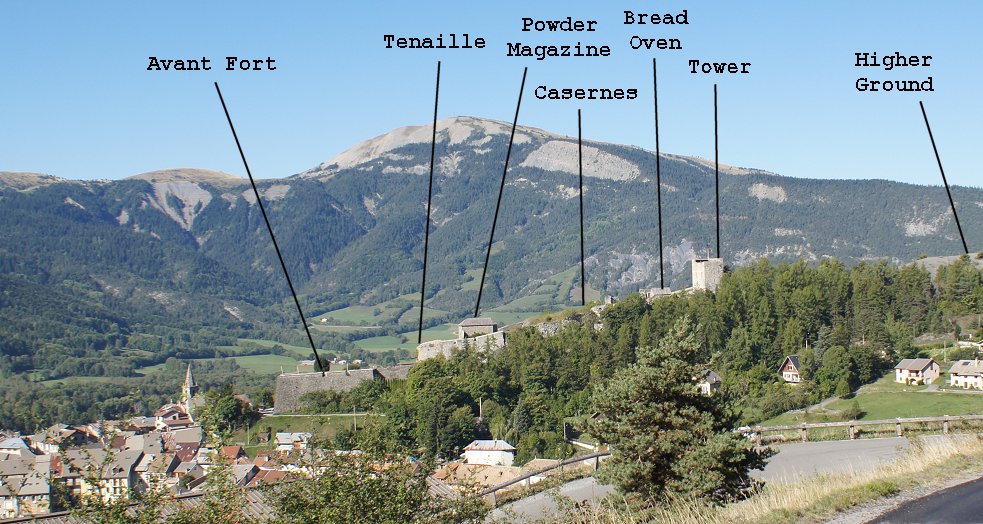
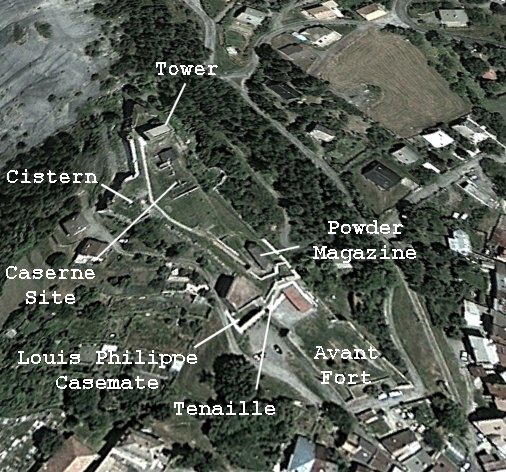
From the east side, you can see that the citadel sits atop a ridge
overlooking town. The ridge continues higher, however, so the
citadel has dominating ground above it, something that Vauban was not
happy with.
The Avant Fort is an outwork lower down on the ridge. If attackers captured the town, they would then face the Avant Fort.
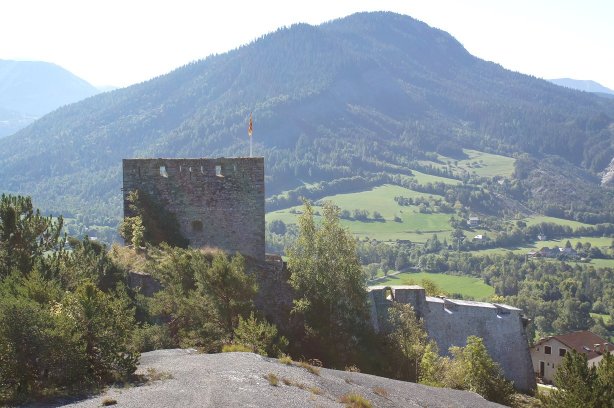
From Higher Ground

A ditch separates the citadel from the Casemate Nord
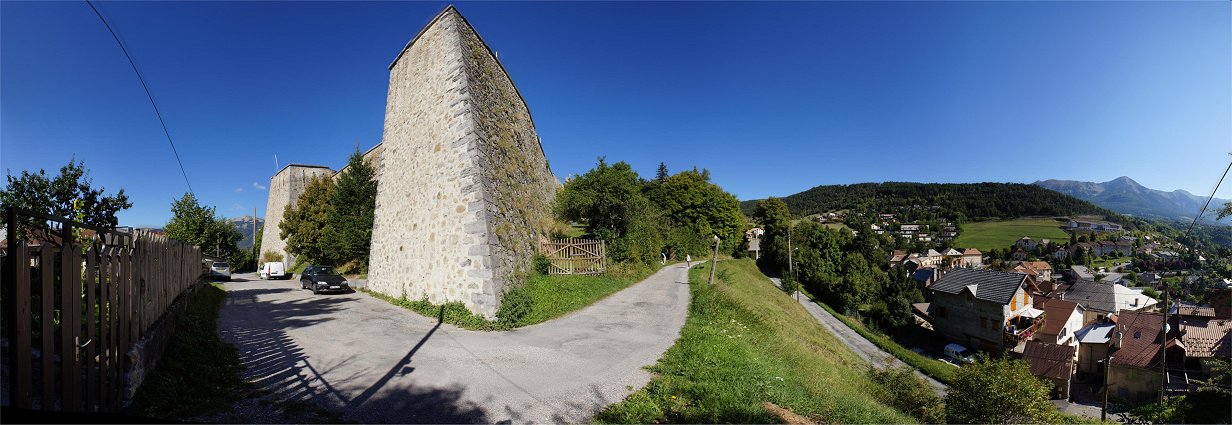
Avant Fort

Entrance
The entrance to the fort featured a drawbridge leading to the Avant Fort - an outwork facing town.
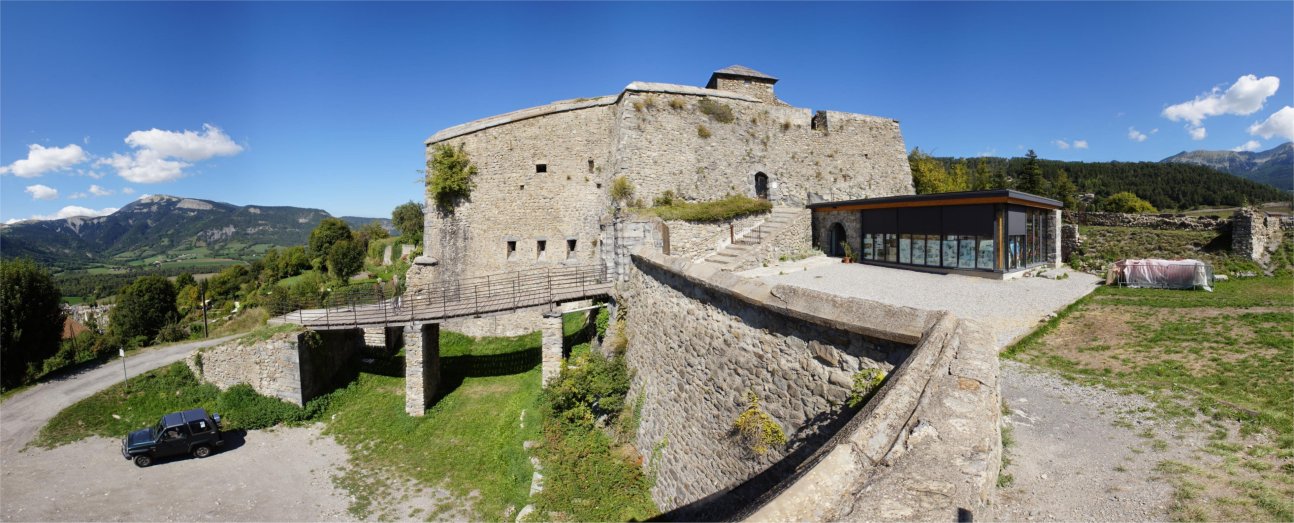
Avant Fort
The Avant Fort has a recently built ticket office next to the steps
leading to the entrance to the main part of the fort. At
left-center behind the bridge is the Louis-Philippe Casemate, the
newest addition to the citadel, built in the early 19th century.

Avant Fort Overlooking Town
In the early 1800s, some casemates and loopholes were added to the 17th century design.
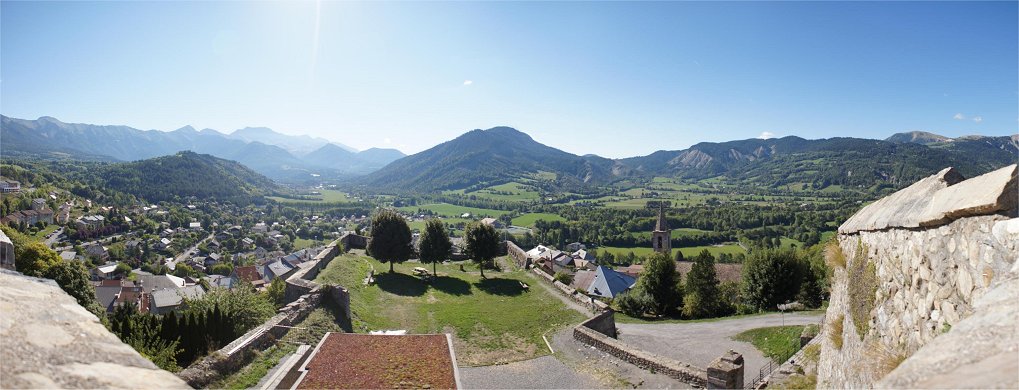
Avant Front From Atop the Tenaille

Gate Through Tenaille
Uphill makes entry more difficult for attacker. Before proceeding
up through the passage, we'll go down the steps at left to investigate
a 19th century addition.
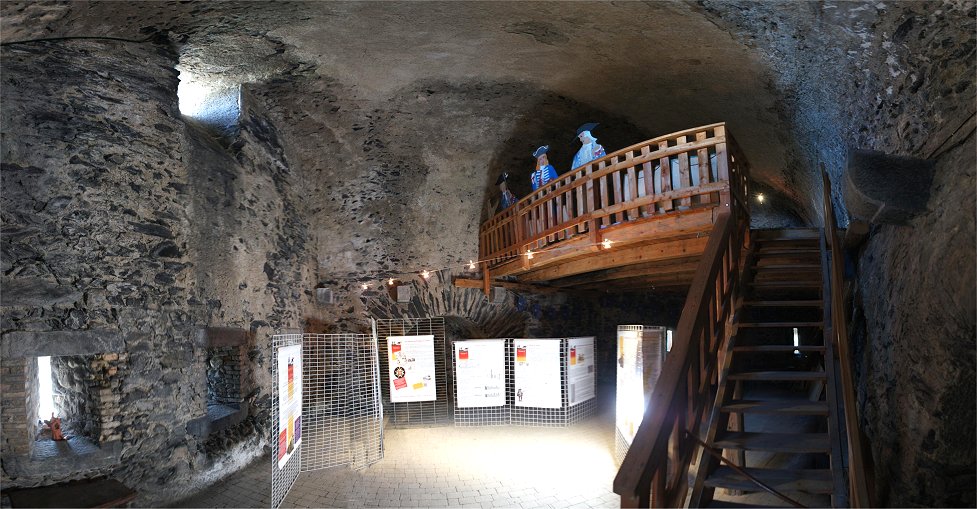
Louis Philippe Casemate
In the early 19th century, unrest in Italy was cause for concern for
France. giving reason to add this casemate overlooking the citadel
entrance and the Avant Front.

Traverse
We climbed the steps visible at right-center. Built along a
ridge, the citadel was narrow with dimensions of 25 x 200 meters.
To prevent enemy fire from one side of the citadel hitting troops
in the rear, a traverse was built along the length of the fort.
Before we pass through the traverse - the prominent opening at
center - we'll look at the cartridge store at left then go to the
tenaille on the right side of the panorama
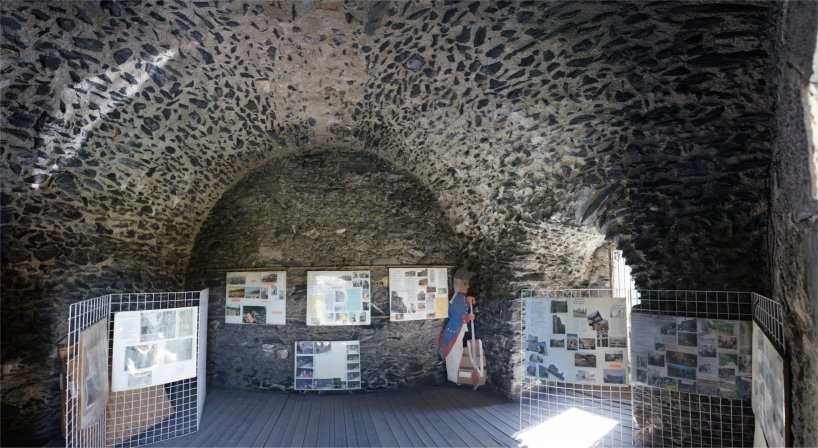
Cartridge Store
Cool in summer and comfortable in winter, conditions were ideal for the cartridge store.

Above Louis Philippe Casemate
This is the area next to the tenaille built over the Louis Philippe casemate.

Powder Magazine
The powder magazine predates the citadel since it was once part of the town walls.

Cistern
Capacity of the cistern was 220,000 liters, and the daily ration was
seven liters per day. This capacity could last for eight months.

From Caserne Site
The barracks were designed to house 144 men. The garrison was less than this - no more than 120 men.

From Tower
The tower is twelve meters high. Vauban thought that the tower
was the best part of the citadel. The ditch around the tower was
filled in and loopholes constructed.
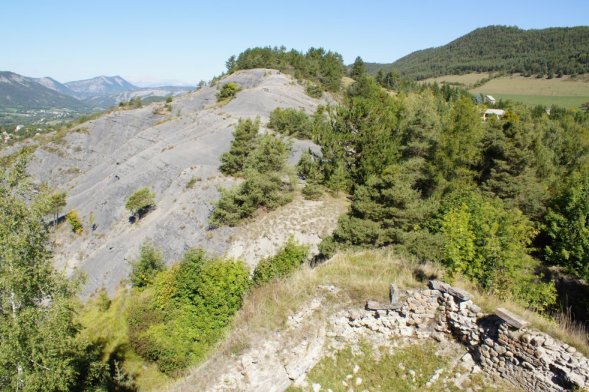
From Tower

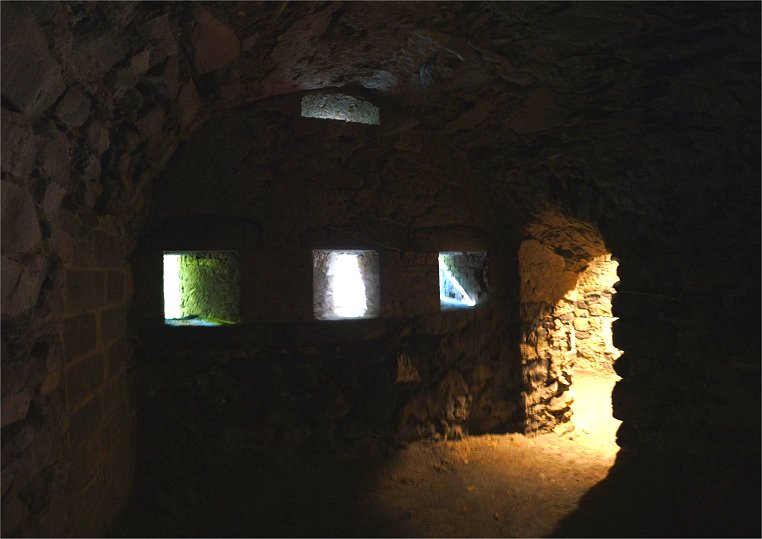
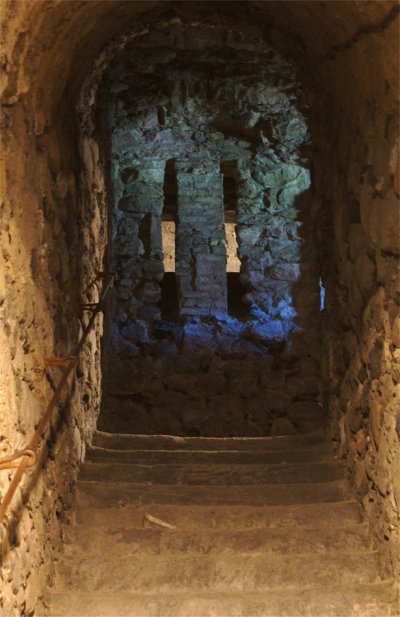
Northern Casemate and Passage from Tower
Built in 1827, the casemates cover the citadel walls from a position to
their front, separated by a ditch, and connected with an underground
passage. Loopholes within the passage would help contain an enemy
that captured the casemate.
Copyright 2015 by John Hamill

























